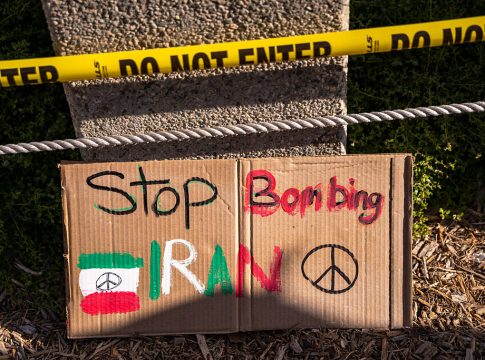Cold War Heat: A New Chapter in U.S.-Iran Relations
Tensions Escalate to New Heights
In a dramatic turn of events, the U.S. escalated its conflict with Iran on June 22, 2025, launching airstrikes on three Iranian nuclear sites, significantly amping up the already strained relationships between the two nations. This marked one of the lowest ebbs in diplomatic ties that have been tense for decades. The convoluted history between the U.S. and Iran has ebbed and flowed through a series of turmoils dating back to the 1950s.
The Roots of the Rift
A Legacy of Distrust
The tension can be traced back to the 1953 coup orchestrated by the U.S. and the U.K. that toppled Iran’s democratically elected Prime Minister, Mohammed Mossadegh. This act sowed the seeds of resentment, especially as the U.S. later backed the oppressive regime of the Shah. A turning point came in 1979 when the Iranian revolutionaries overthrew the Shah, culminating in the infamous hostage crisis at the U.S. Embassy in Tehran, which led to a complete severance of diplomatic relations.
Key Moments in a Tumultuous Timeline
Trauma of the 1980s
As the 80s rolled in, the backdrop of the Iran-Iraq war saw the U.S. tacitly support Iraq, turning a blind eye to Saddam Hussein’s brutal tactics, including the use of chemical weapons. Meanwhile, the U.S. stealthily engaged in arms deals with Iran, a political tug-of-war that ultimately backfired and ignited the Iran-Contra scandal.
A Flicker of Hope
The late 1990s ushered in a brief moment of contact when moderate President Mohammad Khatami reached out for dialogue, but hardliners swiftly squashed any budding optimism. This backdrop of missed opportunities continued into the 2000s, highlighted by President George W. Bush’s branding of Iran as part of an "Axis of Evil."
A New Era?
The Nuclear Deal and Its Aftermath
Fast forward to 2015, and the historic Iran nuclear deal surfaced, aimed at curbing nuclear ambitions in exchange for relief from crippling sanctions. But destiny would have other plans; after President Trump withdrew from the agreement in 2018, the wheels of conflict were set in motion once again.
The Recurring Cycle
In January of 2020, the assassination of Iranian General Qassem Soleimani ramped up hostilities further, creating a ripple effect that left many fearing for regional stability. Every flip of the political coin only seemed to deepen the conflict rather than address it.
What’s Next?
As of now, with ongoing negotiations stymied by the recent U.S. airstrikes, the world watches with bated breath. Iran has signaled intentions to retaliate, bringing a renewed sense of unpredictability to an already fraught situation.
Stay Tuned!
The saga continues as both nations grapple with their fraught history and contemplate what could come next. If there’s one thing to take away from this historical rollercoaster, it’s that the U.S.-Iran relationship is anything but straightforward. As we look to the future, the question lingers: Will diplomacy ever bridge this longstanding chasm, or are we destined to repeat the past?

Covers viral stories, pop culture, and breaking celebrity news.
Bio: Jamie has a sharp eye for what’s buzzing online, tracking social media trends and entertainment headlines around the clock.

